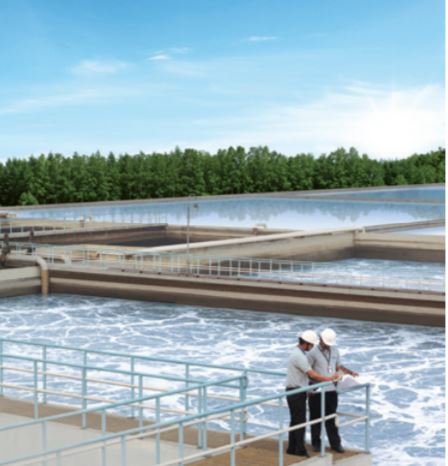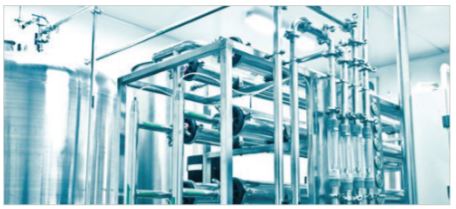
 Newsletter
Newsletter  TOSHIBA'S COMMITMENT TO THE DEVELOPMENT
OF WATER SOLUTIONS FOR THE NEXT INDIA
TOSHIBA'S COMMITMENT TO THE DEVELOPMENT
OF WATER SOLUTIONS FOR THE NEXT INDIA
TOSHIBA'S COMMITMENT TO THE DEVELOPMENT
OF WATER SOLUTIONS FOR THE NEXT INDIA
A truly bewildering paradox facing us all today is if 70% of earth’s surface is covered by water, how can there ever be a scarcity? And yet, the World Economic Forum (WEF) continues to rank water crisis among its top three global risks since 2012. Today, 1 in 9 people globally, lack access to safe water, and more than two billion people are compelled to drink unsafe water. According to a UN report 40 per cent of the world’s people are being affected by water scarcity. If not addressed, as many as 700 million could be displaced by 2030 in search for water. World Bank forecasts that water availability in cities could decline by as much as two thirds by 2050.
Some 80 per cent of wastewater is discharged untreated into the environment and water-related disasters account for 90 per cent of the 1,000 most devastating natural disasters since 1990. According to a recent report on waste-water collection and treatment in urban India, only about 30% of wastewater was being treated to some level.
An estimated 76 million people in India have no access to a safe water supply, and the situation is only getting more serious.
There are multiple reasons for increasing water scarcity in India. For one, it still relies majorly on monsoon showers to replenish its water supply and the ever-growing population is adding to increased water usage. Insufficient infrastructure to manage municipal waste, causes sewage to either seep underground or eventually flow into the rivers, contaminating both the sources of water, causing increase in water pollution levels. Also, the booming industrial revolution brings in increased levels of industrial waste. If left untreated or unregulated, this too ends up in our water supply system through river channels.

Toshiba has been Japan’s leading solution company for water supply and sewage facilities for over 40 years. Recognising India as a promising country for developing water-related business and to bring in its expertise and global access to India, Toshiba acquired majority stake in UEM in the year 2015. With the synergy between Toshiba and UEM, the group has a unique opportunity to deliver breakthrough technologies and quality control to solve various water and environmental problems. Today UEM is completely owned by the Toshiba Group with Toshiba acquiring 100% stake in UEM on 20th March 2018. With its existing offices in USA, Trinidad and Tobago, Oman, Headquarters in India and a recently established office in Philippines and a strength of approximately 800 employees, UEM is steadily increasing its global footprint.
UEM is focusing on three major verticals in India – Municipal, Industrial and Operation & Maintenance services. In the municipal segment, UEM is focused on the Water and Wastewater Treatment Segment (WTPs/STPs/WWTPs) using various modern technologies. With the increasing industrial development in India, UEM is also exploring specific projects in Industrial sector having experience in handling all kinds of effluent that gets generated from various types of industries viz. Refinery, Petrochemical, Petroleum, Automobile, Power, Brewery, Distillery, Textile, Pharmaceutical, Tannery, Beverage, Steel, Dairy, Paper,Palm Oil, Hotel, Power, Sugar, Hotel, Hospital etc.
Technologies:

UEM offers multiple modern technologies like ZLD – Zero Liquid Discharge using “HERO™“ – High Efficiency Reverse Osmosis, Anaerobic Biological Treatment, SBR – Sequential Batch Reactor, MBR – Membrane Bio Reactor, etc.
Apart from these, global design centre with in-house engineering capabilities in process engineering, civil and structural engineering, mechanical engineering, instrumentation and controls, and electrical engineering allows UEM to deliver, not just the institutional knowledge UEM has gained in designing over 350 projects, but also suggest the best CAPEX and OPEX ratio solution, based on client’s requirements.
Projects in the Municipal sector:
14 MLD Sewage Treatment Plant Allahabad for UPJN, where using the proven state-of-the-art Sequential Batch Reactor (SBR) technology, UEM established a 14 MLD sewerage treatment plant project in Salori Allahabad to produce high quality treated water and discharge the treated water into the Ganges. The treated water conforms to the standards where Biochemical Oxygen Demand (BOD) < 10 mg/L; Total Suspended Solids (TSS) < 10 mg/L; Chemical Oxygen Demand (COD) < 100 mg/L; Potential of Hydrogen (pH): 5.5 to 9.
2 STPs based on SBR Technology (5MLD, 7 MLD) & sewerage works funded by World Bank at Sahibganj for JUIDCO.
A 60 MLD STP based on SBR Technology including main pumping station having capacity 83 MLD along with a new underground sewerage network of about 55 KM length at Saidpur Patna, Bihar.
Projects in the Industrial sector:
PTA Plant for JBF Petrochemicals at Mangalore. PTA wastewater is one of the most challenging wastewater to treat. The system offered is a comprehensive one and comprises of a combination of Anaerobic, Aerobic, Ultrafiltration, Heavy Metal removal system followed by RO System.
ZLD Plant for Japanese Automobile manufacturer. In this project, we have offered a proprietary system to the Client, which is called “HERO™” High Efficiency Reverse Osmosis System. The best feature of this technology is that it operates in such a manner or environment which ensures very high recovery across the RO system and consequently the quantity of RO rejects is reduced substantially. On account of low volume of rejects, the downstream evaporator’s size is decreased to a greater extent and there are impressive savings in the Operational Costs of the system.
Toshiba and UEM are committed to the development and operation of water and environmental infrastructure. Toshiba and UEM will contribute to the establishment of sustainable water circulation systems and the realization of advanced environmentally sound communities FOR THE NEXT INDIA and WORLD.


